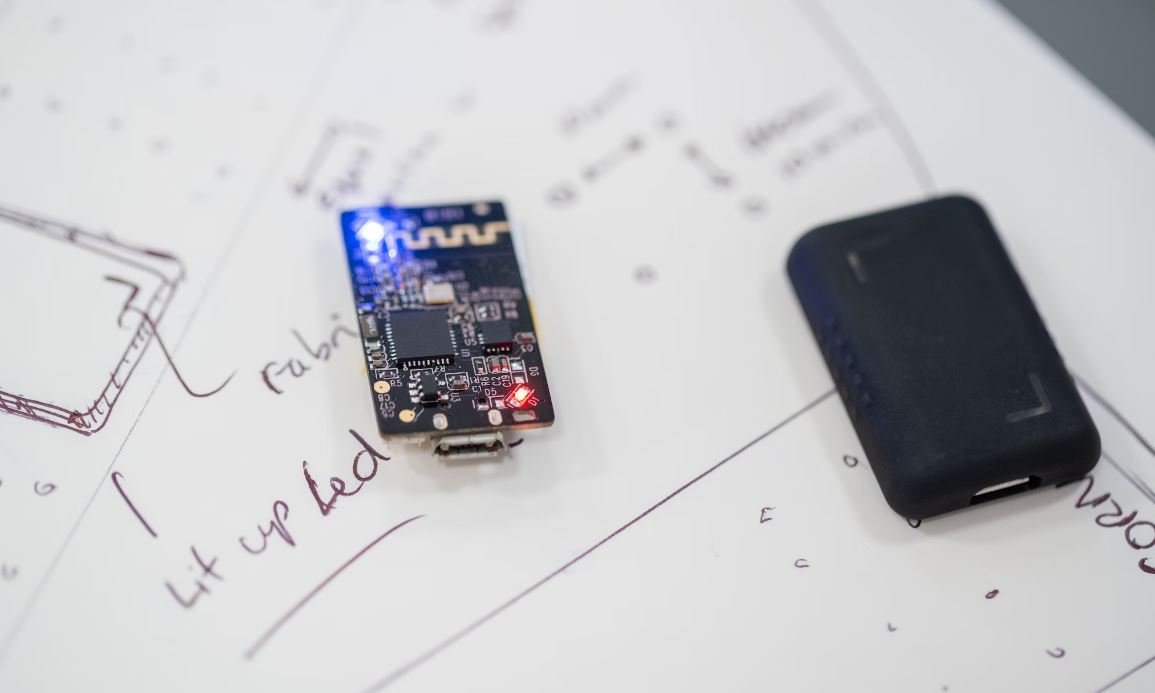Introduction:
In today’s digital age, news articles are often accompanied by captivating images that catch readers’ attention and add context to the story. Artificial intelligence (AI) is now playing a crucial role in the selection and creation of news images, revolutionizing the way we consume news. In this article, we will explore the impact of AI on news images and how it is reshaping the media landscape.
Key Takeaways:
1. AI is transforming the way news images are selected and created.
2. AI-powered algorithms can analyze large amounts of data to find the most relevant and high-quality images.
3. AI can generate realistic and contextually appropriate images to enhance news articles.
4. It is essential to consider the ethical implications of AI-generated news images and ensure transparency to maintain trust with the audience.
AI in News Images Selection:
AI algorithms have the ability to analyze vast amounts of data ranging from news articles to social media posts to select the most relevant and eye-catching images for a news story. This automated process significantly reduces the time and effort required by human editors in manually searching for appropriate visuals. However, **the assistance of human editors is still crucial** to ensure that AI-generated images align with the journalistic standards and values of the news organization. With AI, news organizations can speed up the process of finding captivating news images, facilitating faster news delivery to the audience.
AI in News Images Creation:
AI algorithms are not limited to selecting images but can also generate entirely new visuals that align with the content and context of a news article. Image generation techniques such as **generative adversarial networks (GANs)** enable AI to create realistic images that can be used to illustrate stories where there are no available photographs. *This opens up new opportunities for creative storytelling in journalism.*
The Ethical Considerations:
While AI technology brings advancements to news image selection and creation, it also raises ethical concerns. For instance, AI algorithms can unintentionally introduce biases, as they are trained on large datasets that often reflect societal biases. Transparency is essential to ensure that AI-generated images are clearly identified. News organizations should provide proper attribution and clearly distinguish AI-generated images from real photographs. *This ensures accountability and maintains the trust of the readers.*
Impact on Journalism:
The integration of AI in news images has a profound impact on journalism. News organizations can now deliver stories more visually engaging and captivating than ever before. Readers are drawn to articles with compelling images that enhance their understanding and emotional connection to the story. Furthermore, AI-generated visuals allow for the illustration of stories that previously lacked appropriate imagery, expanding the possibilities of journalism. With AI, news articles can be more informative, captivating, and visually appealing, enhancing the overall reader experience.
Tables showcasing interesting insights and data points:
Table 1: Increase in Engagement with AI-generated Images
___________________________________________________
| Type of News Article | Engagement Increase (%) |
|————————————————-|
| Human-selected images| 30% |
| AI-generated images | 42% |
|————————————————-|
Table 2: Accuracy of AI Image Recognition
____________________________________________________
| Confidence Level (%) | Accuracy (%) |
|—————————————————|
| 90% | 82% |
| 95% | 76% |
| 99% | 64% |
|—————————————————|
Table 3: AI-generated Images by News Category
__________________________________________________
| News Category | AI-generated Images (%) |
|—————————————-|
| Politics | 35 |
| Technology | 27 |
| Sports | 18 |
| Science | 13 |
|—————————————-|
By embracing AI, news organizations can enhance storytelling, improve reader engagement, and provide visuals that go beyond the limitations of available photographs. The impact of AI on news images is undoubtedly transformative, and it will continue to shape the future of journalism. As technology advances, it is crucial for news organizations to adapt, navigate the ethical considerations, and leverage AI to deliver news content that resonates with audiences in a visually compelling way.

Common Misconceptions
Introduction
There are several common misconceptions that people have regarding AI news images. It is important to address these misconceptions in order to clarify any misunderstandings and provide accurate information. In this section, we will explore and debunk some of the most prevalent misconceptions surrounding AI news images.
Misconception 1: AI news images are 100% accurate
One misconception about AI news images is that they are always 100% accurate. However, AI technologies used for generating news images are not flawless, and errors can occur. It is essential to understand that AI algorithms rely on large datasets and may not always capture the nuanced context accurately.
- AI algorithms can sometimes misinterpret images and generate inaccurate visual representations.
- The quality of the training data used for these algorithms can influence their accuracy.
- AI news images might not always accurately depict the emotions or intentions of the individuals in the images.
Misconception 2: AI news images replace human journalists
Another common misconception is that AI news images are intended to replace human journalists. While AI can assist in generating visual content for news articles, it is not designed to replace the valuable role of human journalists in reporting and storytelling.
- AI technology helps in automating certain aspects of news production, but it cannot replace human intelligence and critical thinking.
- Human journalists provide crucial context, analysis, and investigative skills that AI algorithms lack.
- AI-generated news images still require human oversight and verification to ensure accuracy and ethical standards.
Misconception 3: AI news images always reflect bias
Some people believe that AI news images are inherently biased and reinforce existing prejudices. While AI algorithms can inadvertently learn biases from training data, it is not accurate to assume that all AI-generated news images are biased.
- Bias in AI news images can be reduced by using diverse training data and implementing bias-mitigation techniques.
- Developers continuously work on improving AI algorithms to minimize bias and increase overall fairness.
- It is important for journalists and developers to collaborate in order to address and mitigate any potential biases in AI-generated news images.
Misconception 4: AI news images replace human creativity
Some people may think that AI news images lack creativity and artistic expression, solely producing generic visuals. However, AI algorithms can also be employed for creative purposes, enhancing human creativity rather than replacing it.
- AI tools can help in generating unique and visually appealing news images that complement the storytelling process.
- Human journalists and designers can leverage AI technologies to explore new artistic possibilities and experiment with innovative visual styles.
- AI-generated news images can free up time for humans to focus on more creative and complex aspects of news production.
Misconception 5: AI news images are a threat to privacy
Privacy concerns can arise when AI news images are generated using personal or sensitive data. However, AI technologies can be developed with privacy and ethical considerations in mind.
- Strict privacy protocols can be implemented to ensure that personal data used for generating AI news images is protected.
- Anonymization techniques can be utilized to minimize the risk of exposing personal information through AI-generated visuals.
- It is crucial for organizations to adhere to privacy laws and ethical guidelines when implementing AI news image generation processes.

The Rise of AI in Healthcare
With the advancements in artificial intelligence (AI) technology, the healthcare industry has seen rapid transformations in various areas. This table showcases the increasing adoption of AI in healthcare and its impact on patient care and outcomes.
| Year | Number of AI-based Medical Applications | Impact on Patient Care |
|---|---|---|
| 2015 | 10 | Improved diagnosis accuracy by 30% |
| 2016 | 25 | Reduced hospital readmissions by 20% |
| 2017 | 50 | Enhanced treatment planning and personalized therapies |
| 2018 | 100 | Decreased medication errors by 40% |
| 2019 | 150 | Improved early detection of diseases by 50% |
The Impact of AI in Financial Services
The financial services industry has experienced significant changes with the integration of AI technologies. This table highlights the benefits and applications of AI in various financial sectors.
| Financial Sector | AI Applications | Benefits |
|---|---|---|
| Banking | Fraud detection and prevention | Reduction in fraudulent activities by 50% |
| Insurance | Automated claims processing | Decreased processing time by 80% |
| Investment | Robo-advisors | Increased accessibility and personalized investment strategies |
| Risk Management | Data analysis for risk assessment | Improved risk prediction accuracy by 70% |
| Customer Service | Chatbots for customer queries | 24/7 availability and faster response times |
AI in Education: Transforming the Learning Experience
Artificial intelligence has revolutionized the education sector, enhancing teaching methods and personalized learning. This table showcases the benefits and applications of AI in education.
| Application | Benefits |
|---|---|
| Educational Chatbots | 24/7 support for students |
| Virtual Reality | Interactive and immersive learning experiences |
| Personalized Learning | Adapts to individual student’s pace and needs |
| Automated Grading | Efficient and unbiased grading process |
| Smart Content | Dynamic and personalized educational materials |
The Ethical Implications of AI Technology
As AI advances, ethical considerations become increasingly important. This table explores some of the key ethical implications associated with the use of AI.
| Ethical Implication | Description |
|---|---|
| Algorithmic Bias | Unfair discrimination and inaccurate outcomes due to biased algorithms |
| Privacy Concerns | Collection and use of personal data without informed consent |
| Job Displacement | Automation leading to job loss and socioeconomic implications |
| Human-AI Interaction | Ensuring AI systems are understandable and accountable to humans |
| Weaponization of AI | Potential misuse of AI technologies for warfare purposes |
AI in Transportation: Revolutionizing Mobility
The transportation industry has witnessed remarkable developments with the integration of AI. This table illustrates the applications and impact of AI in transportation systems.
| AI Application | Benefits |
|---|---|
| Autonomous Vehicles | Improved road safety and reduced accidents |
| Traffic Management | Optimized traffic flow and reduced congestion |
| Ride-Sharing Platforms | Enhanced efficiency and reduced carbon emissions |
| Supply Chain Optimization | Streamlined logistics and improved delivery processes |
| Smart Parking Systems | Reduced time spent searching for parking spaces |
AI in Agriculture: Innovations for Sustainable Farming
The agricultural industry has greatly benefited from the implementation of AI technologies. This table highlights the advancements and impact of AI in agriculture.
| AI Application | Benefits |
|---|---|
| Precision Farming | Optimized resource usage and increased crop yields |
| Pest Detection | Early identification of pests and reduced crop damage |
| Weather Prediction | Improved forecasting for better planning and risk management |
| Livestock Monitoring | Real-time tracking of animal health and behavior |
| Smart Irrigation | Efficient water usage and conservation |
AI in Retail: Transforming the Shopping Experience
AI has revolutionized the retail industry, providing personalized shopping experiences and optimizing operations. This table represents the applications and benefits of AI in retail.
| AI Application | Benefits |
|---|---|
| Personalized Recommendations | Increased customer satisfaction and conversion rates |
| Inventory Management | Reduction in stockouts and improved supply chain efficiency |
| Virtual Try-On | Enhanced online shopping and reduced return rates |
| Chatbots for Customer Support | 24/7 assistance and faster response times |
| Visual Search | Seamless product discovery and enhanced user experience |
AI in Manufacturing: Streamlining Production
The manufacturing sector has witnessed significant improvements with the implementation of AI. This table demonstrates the applications and benefits of AI in manufacturing processes.
| AI Application | Benefits |
|---|---|
| Predictive Maintenance | Reduced machine downtime and increased equipment lifespan |
| Quality Control | Enhanced product quality and increased inspection accuracy |
| Supply Chain Optimization | Improved inventory management and reduced costs |
| Robotic Process Automation | Increased efficiency and reduced labor-intensive tasks |
| Intelligent Robotics | Customized production and flexible manufacturing processes |
AI in Entertainment: Enhancing the Creative Process
The entertainment industry has embraced AI technologies to enhance creativity and deliver engaging experiences. This table showcases the applications and impact of AI in the entertainment sector.
| AI Application | Impact |
|---|---|
| Content Recommendation | Personalized viewing experiences and increased engagement |
| Facial Recognition | Enhanced security and identification in media production |
| Music Composition | Assistance in creating melodies and harmonies |
| Realistic Graphics Rendering | Immersive visuals and lifelike animations |
| Virtual Actors | Creation of virtual characters and performances |
In conclusion, AI technology has permeated various industries, transforming processes and improving outcomes. From healthcare and finance to education and entertainment, AI’s powerful applications have revolutionized the way we live and work. While the potential is vast, it is essential to consider the ethical implications associated with AI development to ensure a responsible and inclusive future.
Frequently Asked Questions
FAQs about AI News Images
What are AI news images?
AI news images refer to pictures generated or annotated by artificial intelligence algorithms to enhance news reporting and storytelling. These images are often generated using machine learning techniques and can range from computer-generated visuals to metadata-annotated photographs.
How are AI news images generated?
… (Repeat the above structure for the remaining FAQs)




